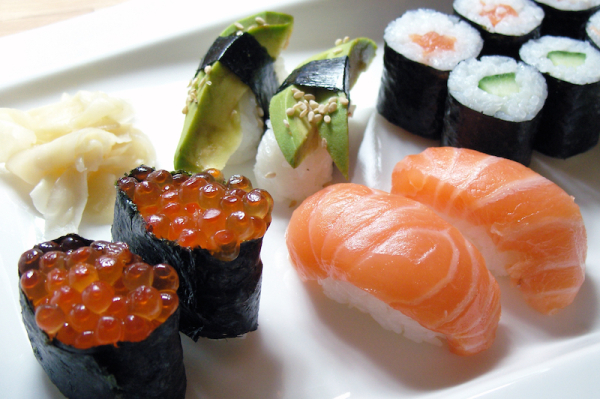
Hygienic handling and storage of raw materials, as well as the use of fresh ingredients, are important in ensuring the quality of sushi. Photo: Heidi Öjst
- Previous Article How Russia’s attack on Ukraine reshaped Finland’s NATO debate on Twitter
- Next Article YLE: Many Finns to see purchasing power improve by hundreds of euros in 2024
A comprehensive study conducted in 2023 by the Helsinki City Environmental Services, along with Espoo Regional Environmental Health, Central Uusimaa Environmental Center, and Porvoo Environmental Health Care, has revealed encouraging results regarding the microbiological quality of sushi in the Helsinki capital region.
The investigation involved collecting 177 sushi samples from 59 restaurants and 30 stores offering self-made, unpackaged sushi either as self-service or service sales.
This included 118 samples from restaurants and 59 from stores, with an additional 13 samples retested due to initial poor results.
The samples were analyzed for total aerobic microbial count, Staphylococcus aureus, and Bacillus cereus. Sushi containing fish and shellfish was also tested for Listeria monocytogenes. A preliminary sensory evaluation and pH level assessment were conducted for all samples, along with investigations into production timing and temperature control.
The findings were quite reassuring: 80.2% of the sushi samples were of good microbiological quality, 12.4% were rated as satisfactory, and only 7.4% were deemed poor. The satisfactory samples were still considered fit for consumption. No significant issues were noted in the preliminary sensory evaluations.
Comparatively, the 2023 results showed a slight decline from a similar study conducted in 2012, primarily due to higher total aerobic microbial counts. Only one poor sample was attributed to Bacillus cereus, a bacterium indicating the thoroughness of vegetable washing and effectiveness of cooling, while Staphylococcus aureus, indicative of hand hygiene quality, was not found in any poor sample. Listeria monocytogenes was detected in three samples, but at levels below 100 cfu (colony forming units) per gram, posing a low risk of illness.
Terhi Juppi, a food inspector from the Helsinki City Environmental Services, advised, “Those in risk groups, such as pregnant women and the elderly, should be aware of the potential presence of Listeria in sushi.”
The study highlighted that the use of uncooked ingredients in sushi could partially explain the instances of poor quality. Hygienic handling and storage of raw materials, along with the use of fresh ingredients, are crucial for maintaining sushi quality. It was also noted that sushi quality was slightly better when stored at temperatures up to 12 degrees Celsius and at lower pH levels, both factors known to inhibit microbial growth in food.
HT
- Previous Article How Russia’s attack on Ukraine reshaped Finland’s NATO debate on Twitter
- Next Article YLE: Many Finns to see purchasing power improve by hundreds of euros in 2024
Source: www.helsinkitimes.fi
